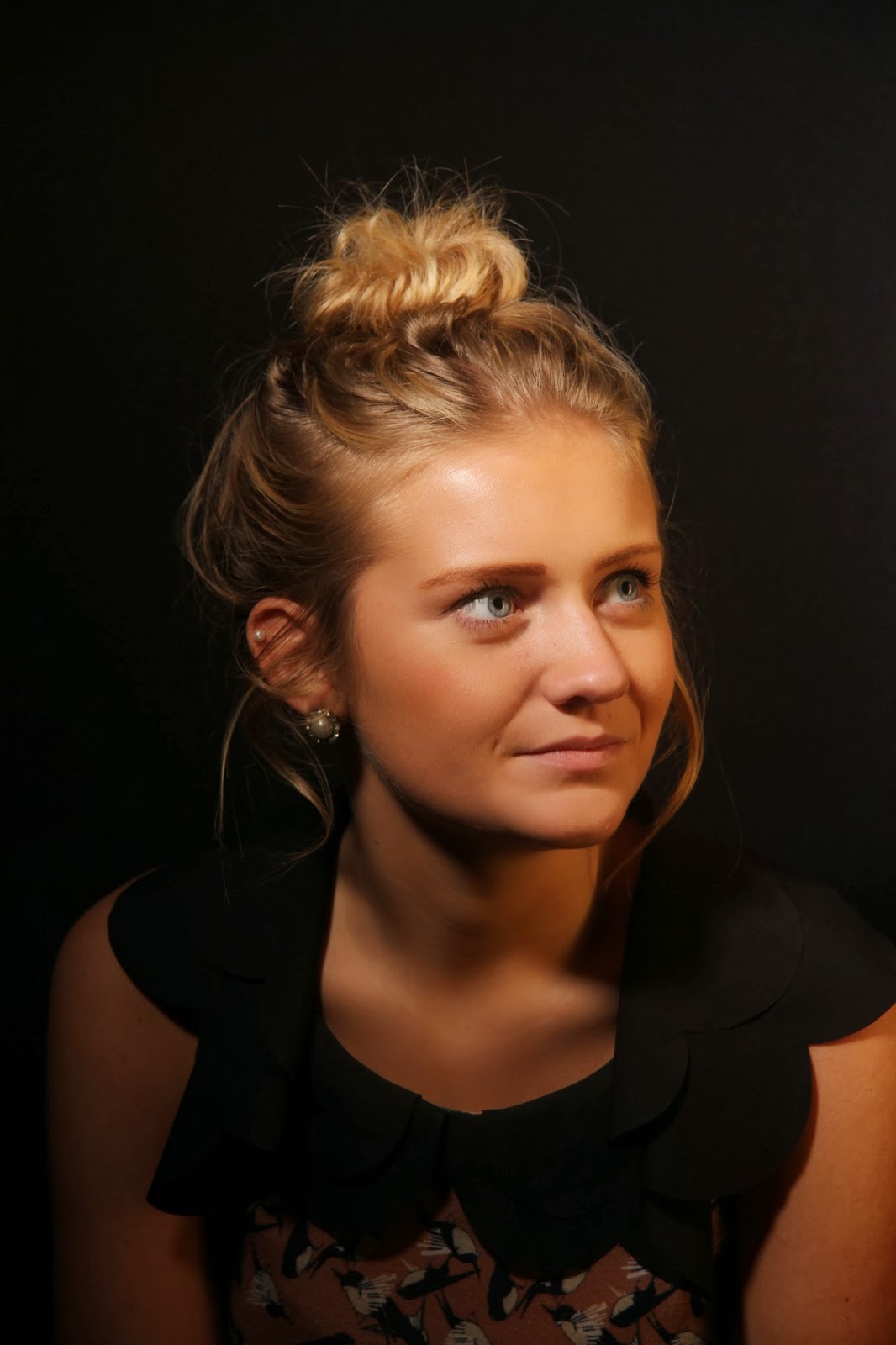Studio set up 1
For my first studio set up I chose to use four studio lights; two lights at the back to be the fill lights and two key lights on either side in front of the subject. The back studio lights had reflector umbrellas and the front studio lights had soft umbrellas on.
Using 100 ISO and 1/125 shutter speed, I used a light meter and measured that I would need F/20 aperture.
The fill light is very easily shown in these photographs as the background is pure white with no hint of shadow or grey.
Another reason why there is no shadow from the sitter is because they are stood about 2-3 meters from the white backdrop.
I like how the background is pure white, it gives the images more clarity and more emphasis on the subject rather than the background.
Studio set up 2
This time I only used two studio lights and chose to use soft boxes rather than umbrellas. I wanted to see what difference this type of lighting technique would make to the images I took on the other shoot.
I still used 100 ISO and 1/125 shutter speed. I measure the aperture using a light meter. I chose to set the flash to 6 on the key light and that gave me an aperture of F/16 on the mid-tones of the sitters face.
With my fill light I chose to set the light level to 5. I used the light meter again and got a reading of F/11. There is a half a stop difference between the two apertures and because of this I rounded the aperture up to F/20.
(Sorry Charlotte)
These are two of the images I produced using this lighting technique.
As the name implies (soft box) it produces a very soft lighting effect on the subject. The face isn't overwhelmed with light and you can clearly see the contours of the subjects face.
But what I don't like is the dirty grey background. There may not be any shadow which I am happy about, but I would have preferred the white backdrop to appear white on the photographs. To get that effect I guess that I would have to use the other two studio lights with the reflecting umbrella like in my first studio set up.





































